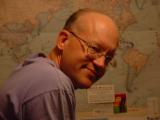
|
Tom Whiteside N5TW.
|

|
The operating position at N5TW is designed for
single-operator two-radio or multi-two contesting. There are eleven
rotor control boxes and seven antenna selection switch boxes.
|

|
Tom Whiteside N5TW and Phil Duff NA4M in the 2001
ARRL International DX Contest, Phone.
|
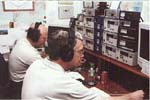
|
AF5Z and WS4G operating in the N5TW multi-op effort for
the 1999 ARRL International DX Contest, CW.
|
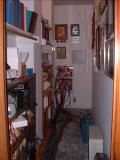
|
This is the shack closet. It is narrow, but deep. At the
far end is is the entry bulkhead for the coax and control
cables.
|
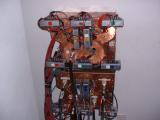
|
This is the entry bulkhead for the coax and control
cables.
|
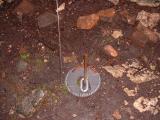
|
Tom is in the process of building a real 160M foursquare.
When complete, the ground radials will take over 10 km of wire.
|

|
A view of the 40M tower at N5TW, as seen from the top
of the 20M tower.
|

|
A view of the 10M tower, looking up. This tower also
supports the 80M phased wire vertical array.
|

|
Looking up the 20M tower at N5TW. Every tower at N5TW
has stacked monoband yagis.
|

|
Reid Hill KC5YKX operated the 2003 ARRL November
Sweepstakes, phone, low power, at N5TW.
|

|
Reid ended up with a Top Ten finish in the SOLP category!
|

|
John Dvoracek KE5C, operating in the ARRL 160 Meter Contest at N5TW.
In the fall of 2003, Tom re-configured the N5TW station, adding a
Ten-Tec Orion transceiver, and moving one of the two operating positions
to a new table in the right of this frame.
|

|
Another view of John KE5C operating in the ARRL 160 Meter Contest.
The Alpha 87A amplifier moved from the right-hand side of the operating
tables to the left-hand side.
|
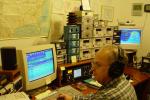
|
Dick Foster W5TA, working the 2003 ARRL 160 Meter Contest with the new
Ten-Tec Orion transceiver.
|

|
Because the rearrangement of the station makes it difficult for station B
Operators to reach the antenna stack controls, Tom built-up a homebrew
stack switching box for that station.
|

